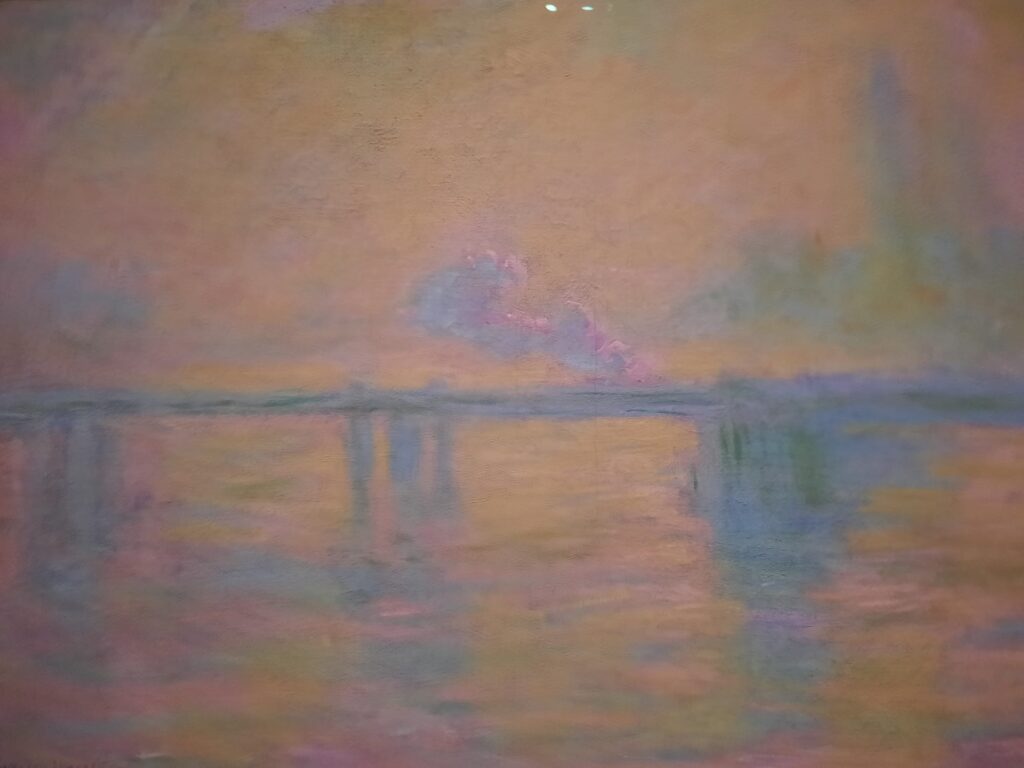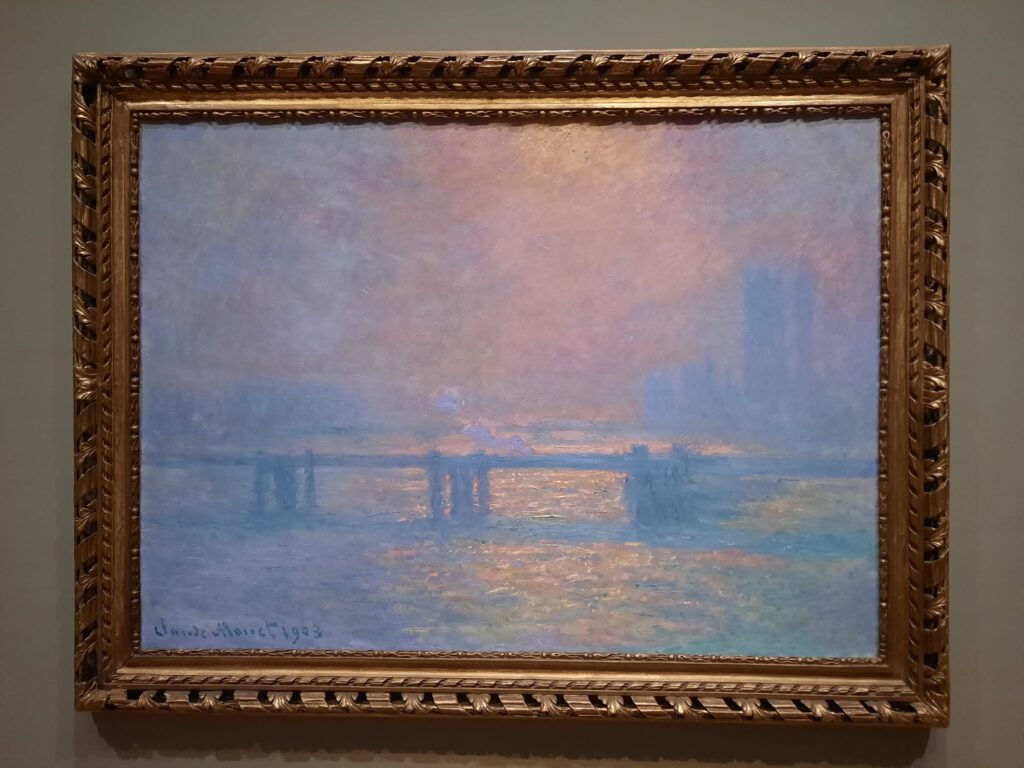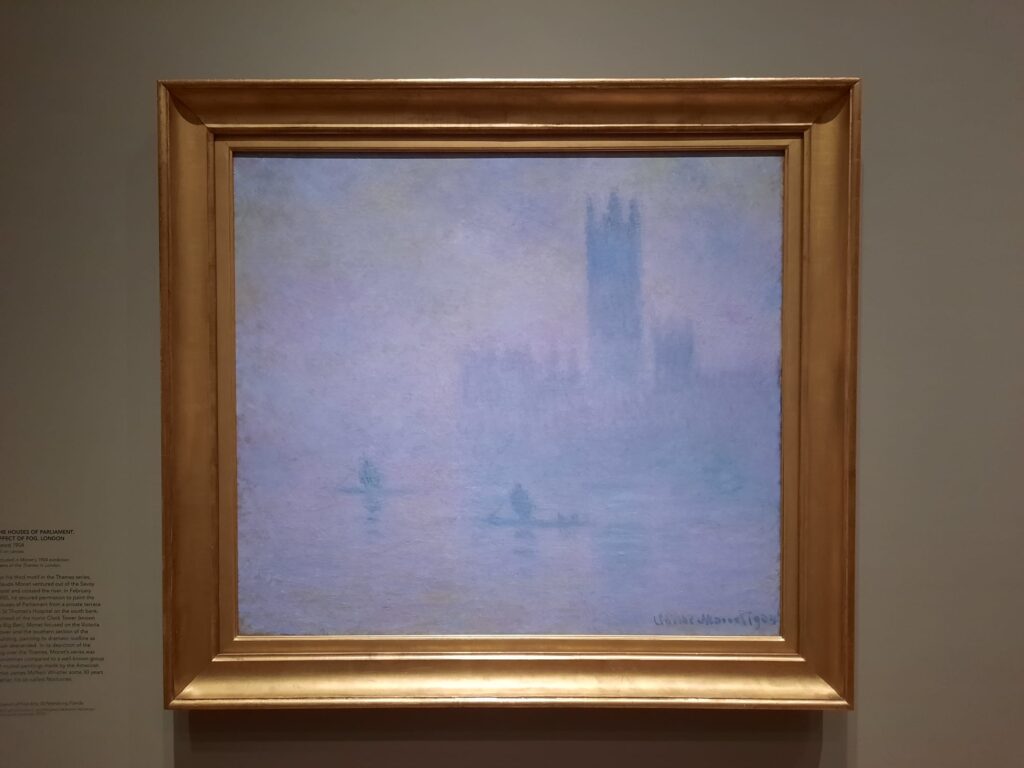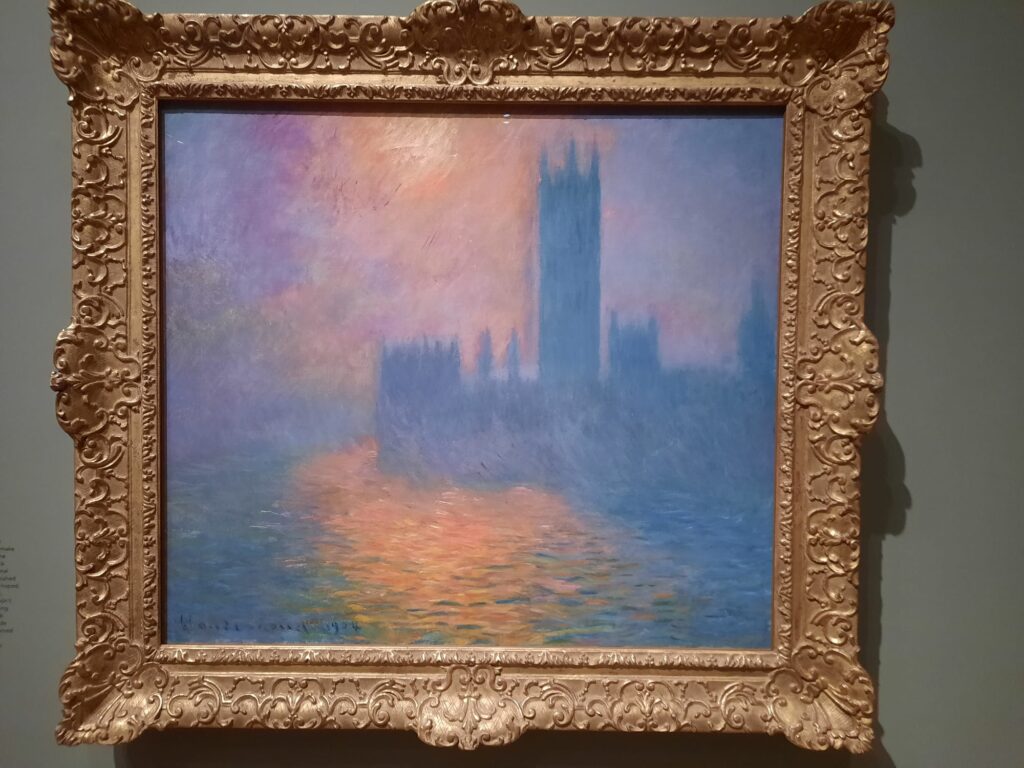Monet and London: Views of the Thames – The Courtauld Gallery, London
An exquisite exhibition at the Courtauld Gallery, Monet and London: Views of the Thames captures a bygone London through the eyes of the Impressionist master.






Another Once-in-a-Lifetime Exhibition
Now this is more like it. I wrote recently about the National Gallery’s blockbuster Van Gogh exhibition, and how disappointed I had been by the visitor experience versus the potential of the subject matter and curation (and as an aside, that was by far my most popular post in recent months. You’re going to train me to do more complaining if you’re not careful). Here at the Courtauld Gallery we have an exhibition with a few similarities: big name artist, “once-in-a-lifetime” opportunity, completely sold out. But the experience couldn’t have been more different.
I won’t keep going on about the negatives of the other (even though it seems that’s what you want). Instead let me focus on what was good about Monet and London: Views of the Thames. And first and foremost, experience-wise, it was the absolutely perfect number of visitors that made it. The Courtauld have done a few things to allow as many people as possible to see the exhibition. They have released tranches of tickets at staggered intervals. They’ve extended their opening hours where they can. But they haven’t compromised on the number of tickets sold. The down side is that, unless you’re a member or willing to buy a membership, there are no more tickets to be had. The up side is, if you are lucky enough to have a ticket, you can enjoy the exhibition as designed.
Rather than flitting around to whichever painting I could get near, at Monet and London I could go around each room, in order, following the curator’s vision for the exhibition. I could also get up close to the works without feeling other visitors breathing down my neck, or feeling guilty for taking more than my fair share of time. I’m actually not typically a huge Monet fan, but being able to take my time like this gave me a newfound appreciation, at least for these works. It was bliss. And as a result I spent about as long in this exhibition, with only 21 works, as I did at the National Gallery with around 60.






Monet and London: Views of the Thames
Let me tell you a bit more about that experience now. I’m going to start with the back story of what Monet was doing in London. He painted the works on view here between 1899 and 1901 (but, Monet being Monet, he finished them later in his studio and dated them haphazardly). That wasn’t his first time in London, though. He had spent time in the city earlier, in the 1870s. Back then, he was avoiding conscription in the Franco-Prussian War. Other artists, like Camille Pissarro, did the same. Monet checked out England’s art galleries, and became familiar with the work of Turner amongst others. He painted scenes of London like this one. Then, when the coast was clear, he headed with his family back to France.
By the late 1890s, Monet was a more established artist. On his three long visits to London over a couple of years he stayed at the Savoy, a nice hotel then as it is now. From here he had an excellent view of the Thames. Two of the motifs in the current exhibition were right on his doorstep, so to speak: Waterloo Bridge and Charing Cross Bridge. The third, the Houses of Parliament, is just a stone’s throw down the river. Monet painted this particular view from a space whose use he negotiated at St Thomas’s Hospital.
What he was trying to achieve in London was capturing the ever-changing atmospheric and light effects caused by the city’s fog (or smog, really). Today, we may imagine a choked and toxic city. But to Monet the colours were enchanting. He described seeing ‘wonderful things’ in the ‘delicious fog’ in letters home to his wife. But as I said, he took the mostly unfinished paintings back to London. There he took a rather Damien Hirst-esque approach to dating them, in advance of an exhibition at the Galeries Durand-Ruel in Paris in 1904.






A Recreated Exhibition and an Unrealised One
Monet’s Paris exhibition in 1904 was a great success. He then had the idea of putting on an exhibition in London of his views of the Thames. This proved logistically difficult, however. The owners of the works he had sold by this point didn’t really want to loan them, amongst other challenges. Monet had plenty of other unfinished works at home, and tried to put together a new grouping. It didn’t quite come off, though, and he gave the idea up in the end.
The Courtauld’s exhibition, expertly curated by Karen Serres (who also curated this), achieves both a recreation of the Paris exhibition and a near-achievement of the unrealised London one. 18 of the 21 works on view were in the Paris exhibition, and today come from Paris, London, Dublin, Philadelphia, Ottawa, Harvard, Lyon, Chicago, Copenhagen, Denver, Florida, New York, Atlanta, Germany, Milwaukee, and private collections. Given the original exhibition had 37 paintings, it is a considerable undertaking to have brought more than half back together. The addition of a handful of different works gives a nice sense of what a London exhibition might have been.
And it’s a good exhibition. The first room has the views of Charing Cross Bridge. The second has the views of Waterloo Bridge and the Houses of Parliament. You can sense Monet’s excitement at the changing conditions. Each landmark seems to vanish slowly into the smog as you progress through the paintings. There are certain effects he loves: the sun burning through the fog behind Parliament’s Victoria Tower, for instance. Monet had a strong vision for these works, even having a bespoke size of canvas made for the latter series. This is truly Impressionism: fleeting conditions, often lasting only a few minutes, that you have to capture en plein air.






Modernity and Progress
I was reminded, actually, of an exhibition I saw on Turner a while back. The premise was an investigation of the different ways in which Turner was a modern painter. And one of those ways was his interest in painting things that were new: both the industrialisation of England, and the effects that industrial pollutants had on skies. It was also the subject of an exhibition I saw at Turner’s House: Turner as the first painter of the Anthropocene, capturing spectacular sunsets caused by particles of pollution refracting the light in new ways.
Similarly, Monet saw his views of London in a different way than we do today. He didn’t think London was beautiful at all without its fog (which, again, we would call smog). To him, the belching chimneys of the South Bank signalled modernity. London, then the world’s largest city, was at the forefront of the march of progress. Today, as we start to feel the impact of all that modernisation and industrialisation, things looks a little different in hindsight. But we can still appreciate Monet’s eye for light, colour, capturing a moment in paint on a canvas. And this perfect little capsule exhibition is a lovely way to do it. Even better if you head over Waterloo Bridge afterwards and peer at the Savoy, imagining Monet with his paintbox, bustling to get out the door while there was good fog for the painting.
Salterton Arts Review’s rating: 5/5
Monet and London: Views of the Thames on until 19 January 2025

Trending
If you see this after your page is loaded completely, leafletJS files are missing.

